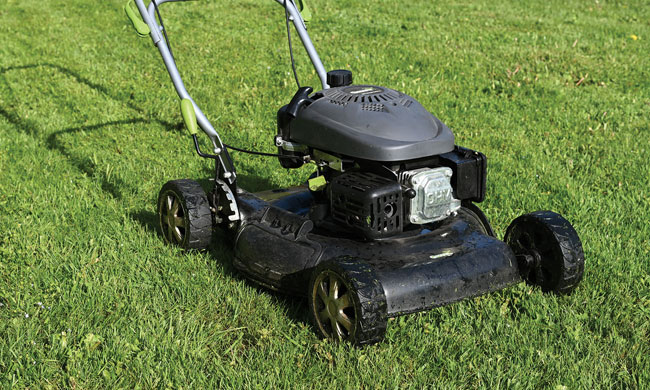Live Better
Simple tips to attract hummingbirds

(Family Features) Throughout the warmer months, many backyards play host to a variety of birds, including hummingbirds. When you see flowers and trees begin to bud and bloom and other migrating birds, like warblers, that’s nature’s way of letting you know it’s time to ready your yard for hummingbirds.
It’s enchanting watching hummingbirds – named for the humming sound of their fast-flapping wings – as their tiny size and speed make them natural wonders. Hummingbirds can fly 25-30 miles per hour, flapping their wings an estimated 70 times per second. They fly in every direction, even backwards, which only hummers can do, and float majestically in midair.
The birds get their brilliant color from the iridescence in the arrangement of their feathers, not color pigment. Plus, they have the fastest metabolism of any animal on Earth, burning 1-2 times their body weight in food daily. Hummingbirds draw nectar from its source into their mouths, lapping it up almost 12 times per second.
To increase your chances of observing these petite powerhouses at home, consider these tips from the experts at Cole’s Wild Bird Products:
Be conscious of beneficial insects. Hummingbirds rely on insects, which provide essential protein, to complement the nectar they crave. To attract insects, try placing rotting fruit near feeders and leave it until insects arrive for hummers’ easy eats.
Leave spiderwebs alone: Hummingbirds use spiderwebs as construction material to hold their nests together and pluck insects caught in the webbing.
Offer a water mister: Hummingbirds adore bathing; a mister gives them the fine spray they prefer. Once soaked, they’re off to find a preening perch.
Provide tiny perches. Leave small, sturdy, bare branches for hummingbirds, to perch on for rest, preening and hunting. Perches provide vantage points to see danger and launching pads to swiftly pounce on insects. Once hummingbirds find a favorite perch, they’ll use it repeatedly.
Hang hummingbird feeders first. Feeders are one of the most effective ways to consistently entice and encourage hummingbirds to come visit. However, not all feeders are created equal. For example, Cole’s Hummer High Rise Feeder is scientifically designed with elevated perches to make hummingbirds feel safe and comfortable, which encourages their consistent return.
Although hummingbird feeders can attract bees and ants, this feeder is uniquely designed to keep pests at bay. It doesn’t drip, so large bees can’t get to the nectar, plus it has a built-in ant moat to keep ants away from nectar when filled with plain water. Since birds drink from the moat, never use any repellents or additives.
Hummingbirds are territorial and not likely to share feeders, so hang multiple feeders far enough apart to attract more birds. To ensure a steady stream of birds, hang feeders in the shade to avoid fermentation of sugar-based liquids, check feeders bi-weekly to keep food fresh and clean feeders as needed with one part white vinegar to four parts water.
Plant flowers. Trumpet honeysuckle, bee balm and sage plants are particularly attractive to hummingbirds and provide rich nectar. Hummingbirds consume 1 1/2 times their body weight daily, eating every 10-15 minutes and visiting 1,000-2,000 flowers per day.
Choose the right nectar. Not all nectar is alike, and hummingbirds can taste the difference. Almost all commercial nectars contain one sugar source – sucrose – because it’s cheaper to make. However, real flower nectar contains three sugar sources – sucrose, fructose and glucose – in varying amounts depending on the flower.
Researched and designed to attract the greatest variety of hummingbirds, Cole’s Nature’s Garden is a high energy, nutrient-rich nectar that combines all three types of organically sourced sugars North American hummingbirds love, with a spring water base. It closely mimics the sugar ratios they favor and provides a healthier, nutritious, all-natural alternative to table sugar.
Don’t forget, hummingbirds have memories like elephants; once they discover your hummer-friendly habitat, they’ll come back every year if there’s a reliable food source. Learn more at coleswildbird.com.
SOURCE:
Cole’s Wild Bird Products
Live Better
Tips to make your AC more energy efficient, sustainable

(Family Features) Updating your HVAC (heating, ventilation and air conditioning) system to cool your home in a smart and sustainable way involves several steps that not only improve energy efficiency but also reduce environmental impact.
Consider these tips from the heating and cooling experts at Carrier to help make your cooling system more eco-friendly:
- Upgrade to an Energy-Efficient HVAC System. If your HVAC system is outdated, consider replacing it with a more energy-efficient model. Look for systems with an Energy Star or high SEER2 (seasonal energy efficiency ratio) rating, which indicates better energy efficiency. The higher the SEER2 rating, the more efficient the unit. Financial incentives for installing a higher-efficiency system are available through the Inflation Reduction Act of 2022. You can also shop for rebates from manufacturers and utility companies.
- Look for a Carbon-Free HVAC System. Heat pumps, ductless and VRF (variable refrigerant flow) systems that run on electricity and use low global-warming potential refrigerant, like Carrier’s Puron Advance, can help reduce your home’s negative impact on the environment.
- Install a Smart Thermostat. A smart thermostat can be programmed based on your preferences and adjust temperatures automatically. These devices can be controlled remotely through smartphones and help reduce energy consumption by cooling your home only when necessary.
- Conduct Regular Maintenance. Keep your HVAC system running efficiently with regular maintenance. This includes cleaning or replacing air filters every 1-3 months, checking refrigerant levels, cleaning outside condenser coils and ensuring the system’s components are in good, working condition and the airflow is not blocked.
- Seal and Insulate. Improve your home’s insulation to maintain a consistent temperature. Seal windows, doors and any gaps or cracks to prevent cool air from escaping. This can significantly reduce the workload on your HVAC system.
- Use Ceiling Fans. Ceiling fans can help circulate cool air throughout your home, allowing you to set the thermostat at a higher temperature without sacrificing comfort, thus saving energy.
- Add Window Treatments. Use blinds, shades or curtains to block out sunlight and reduce heat gain during the hottest parts of the day. This simple step can make a big difference in how much your air conditioner needs to work.
- Upgrade to a Variable-Speed Compressor. Traditional compressors operate at full power or not at all. However, a variable-speed compressor can adjust its output to match your cooling needs precisely, resulting in better efficiency, energy savings and improved indoor comfort.
- Ventilate Properly. Ensure proper ventilation in your home, especially in areas like the kitchen and bathroom, to remove excess heat and humidity, which can reduce the need for air conditioning.
- Update Roofing. If you’re replacing your roof, consider cool roofing materials that reflect more sunlight and absorb less heat than standard roofing materials, reducing the heat that enters your home.
By implementing these strategies, you can improve or update your HVAC system to cool your home more sustainably. Not only do these steps help the environment, they can also lead to lower energy bills and improved indoor comfort. Always consult with an HVAC professional to determine the best and most efficient options for your home and needs.
Find more information and tips to sustainably cool your home at Carrier.com.
SOURCE:
Carrier
Live Better
Steps to get your yard ready for spring

(Family Features) As the weather begins to warm and days get longer, it’s important to begin preparing your yard for a healthy growing season. While factors like climate, soil type and grass type can all impact how your yard grows, there are a few steps you can take during the spring months to help your lawn thrive.
From dethatching and aerating to fertilizing and mowing, tackling these simple chores can help ensure your yard looks its best and is prepared to fight off seasonal weeds, disease and drought.
Tune Your Mower
Before it’s time for the first mowing of the season, inspect your mower and perform any routine maintenance necessary. That goes beyond sharpening, or replacing, the blade, and includes changing the oil, spark plugs and filter as well as filling with a fresh tank of gas.
Loosen the Thatch Layer
While it’s important to avoid working on your lawn until after the final freeze to avoid damaging the grass, raking your yard with a spring tine rake to loosen thatch – the layer of leaves, roots and dead grass that builds up between live grass and soil – before the first mow is equally important. Be sure to rake when the soil is dry; if it’s too soft or muddy, you may pull up healthy grass crowns.
Combat Compacted Soil
If your soil has become compacted – likely the effect of heavy foot traffic – and is too dense for water, air and other nutrients to reach the roots of your grass, aerating can help break it up and reduce thatch. A core, or plug, aerator can introduce tiny holes into your soil by removing plugs of grass and soil, which lets nutrients more easily reach the roots. An added bonus, the plugs can decompose on top of your grass, supplying more nutrients.
Fill in Bare Spots
If your lawn is looking sparse, overseeding, which involves spreading grass seed over your existing lawn, can help fill in bare spots. Be sure to choose the right type of seed for your climate and soil type to ensure proper growth. Applying a slow-release nitrogen fertilizer at the same time can provide additional nutrients that are important for promoting healthy growth.
Start Seasonal Mowing
When the ground is dry enough and your grass is long enough to require cutting, begin seasonal mowing. Be sure to use proper techniques, including varying your mowing direction each time to avoid creating patterns or ruts, and avoid cutting grass too low, which can make the lawn more susceptible to weeds and drought stress. In general, never remove more than one-third of the grass blade at a time.
Find more tips to help get your yard ready for warm weather at eLivingtoday.com.
Photo courtesy of Unsplash
SOURCE:
eLivingtoday.com
Live Better
6 tips to improve sleep quality for overall well-being

(Family Features) Despite a rising number of people searching for the term “sleep” in 2023, nearly 1 in 3 U.S. adults report not getting enough of it, per the Centers for Disease Control and Prevention.
As a foundation for overall well-being, getting quality sleep is key to achieving goals and being present in daily life. Without it, you’re more likely to lack the stamina and energy to follow through on your ambitions.
To help people realize the foundational role sleep plays in everyday successes, Natrol – a leading sleep, mood and stress supplement brand based on Nielsen data – alongside Dr. Jess Andrade are working together to help people improve their sleep quality and habits so they can conquer their wellness goals this year and beyond.
“From consistent exercise to eating healthy and even daily journaling, it may seem like all your priorities are in order, but without sleep, you won’t be able to reap the full benefits of your hard work,” Andrade said. “Often overlooked, getting quality sleep is a fundamental piece to improving overall wellness and it doesn’t have to be complicated. Creating small, achievable changes in our daily sleep routines can lead to long-lasting lifestyle habits for the better.”
Consider these tips from Andrade to help improve your sleep quality so you can achieve your goals.
1. Prioritize Movement and Light Exposure in the Morning
Whether you’re a yogi or prefer a simple stretch when your feet hit the floor, movement and light during the day can help stimulate quality sleep later that night.
2. Understand Sleep Gains are Just as if Not More Important Than Gym Gains
If you’re focusing on fitness goals, you’ll need adequate sleep to see successful results. If you’re a morning workout warrior, schedule earlier bedtimes to ensure you get the recommended 7-8 hours of sleep. For evening workouts, aim to end your sweat session as early in the evening as possible; too much physical activity before bed can keep you up at night.
3. Make Your Bedroom a Sanctuary
Make your bedroom a sleep sanctuary. Keep the room dark, noise-free and comfortable with the thermostat set at 65-67 F for better sleep conditions.
4. Set Nightly Rituals to Unwind
Create nightly rituals that activate circadian rhythms and allow your body to unwind. Consider activities that relax you the most, like taking a bath, reading a book, journaling or sipping decaffeinated nighttime tea.
5. Try Incorporating a Drug-Free Sleep Aid
If you follow good bedtime habits but still occasionally struggle to fall or stay asleep, try a low-milligram melatonin supplement, like those from Natrol, that are designed to help you get a good night’s sleep so you wake up refreshed and ready to conquer your goals.†
6. Follow the 10-3-2-1-0 method
To help you fall asleep and wake up feeling revitalized, Andrade recommends the 10-3-2-1-0 method: Decrease caffeine intake at least 10 hours before bed. Avoid eating bothersome foods 3 hours prior to heading to off to sleep. Engage in relaxing activities like reading at the 2-hour mark and cut out screentime with 1 hour to spare. Ultimately, these habits can lead to zero times hitting snooze the next morning.
Find more ways to improve sleep habits by visiting Natrol.com.
† These statements have not been evaluated by the Food and Drug Administration. These products are not intended to diagnose, treat, cure, or prevent any disease.
SOURCE:
Natrol
-

 NEWS1 year ago
NEWS1 year ago2 hurt, 1 jailed after shooting incident north of Nocona
-

 NEWS5 months ago
NEWS5 months agoSuspect indicted, jailed in Tia Hutson murder
-

 NEWS1 year ago
NEWS1 year agoSO investigating possible murder/suicide
-

 NEWS1 year ago
NEWS1 year agoWreck takes the life of BHS teen, 16
-

 NEWS9 months ago
NEWS9 months agoMurder unsolved – 1 year later Tia Hutson’s family angry, frustrated with no arrest
-

 NEWS12 months ago
NEWS12 months agoSheriff’s office called out to infant’s death
-

 NEWS1 year ago
NEWS1 year agoBowie Police face three-hour standoff after possible domestic fight
-

 NEWS1 year ago
NEWS1 year agoDriver stopped by a man running into the street, robbed at knifepoint





